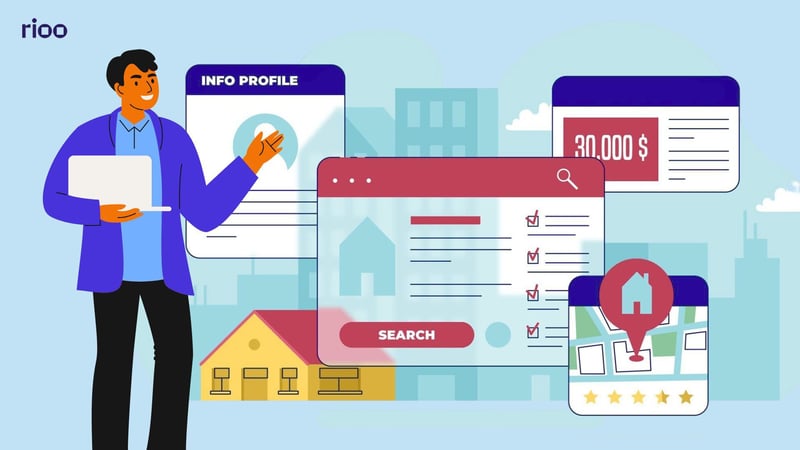Public housing has always been an essential aspect of urban development, providing affordable and safe homes for millions of people worldwide. However, managing public housing efficiently, particularly in growing urban areas, poses several challenges. Issues such as high demand, limited budgets, and the need to ensure quality living conditions for vulnerable populations often make decision-making difficult. In recent years, data analytics in public housing has emerged as a transformative tool, offering the ability to make smarter, more informed policy decisions that lead to improved outcomes for both residents and administrators.
The Role of Data Analytics in Public Housing
Data analytics in public housing involves the collection, processing, and analysis of large datasets to gain valuable insights into various aspects of housing management. These insights can help guide everything from tenant eligibility and maintenance requests to budget allocations and compliance with housing regulations. By utilizing data analytics, public housing authorities can make well-informed decisions that optimize resources, improve resident satisfaction, and ensure sustainability.
As cities grow and housing needs evolve, the role of data analytics becomes even more crucial in guiding public housing policy decisions. Using real-time data, housing authorities can assess the effectiveness of existing policies, identify areas for improvement, and predict future trends in housing demand. This data-driven approach is key to navigating the complexities of public housing and ensuring that policies remain relevant and effective in the long term.

Enhancing Public Housing Policy Decisions
Historically, public housing policy decisions were based on limited data, anecdotal evidence, or assumptions about what residents needed. However, with the power of data analytics, these decisions can now be based on real-world data, leading to more targeted and impactful policies. For example, analyzing data on tenant demographics, income levels, and housing preferences allows housing authorities to better understand the specific needs of different communities. This understanding enables the development of policies that cater to these needs, whether it’s through targeted rent subsidies, priority maintenance scheduling, or initiatives to reduce tenant turnover.
Moreover, data analytics can play a vital role in identifying patterns of tenant behavior that can help predict future needs, such as the likelihood of lease renewals or the risk of tenant displacement. This predictive capability allows public housing managers to take proactive steps, such as offering rent relief programs before financial issues arise or planning for future construction projects in areas with increasing demand. As a result, data analytics in public housing becomes a powerful tool for policymakers to craft responsive and dynamic policies.
Data-Driven Urban Planning: The Key to Sustainable Housing
Data-driven urban planning is another area where data analytics can have a significant impact on public housing. Cities around the world are facing an ever-growing demand for affordable housing, and traditional methods of urban planning may no longer be sufficient to address these needs. By integrating data analytics into urban planning processes, cities can make better use of available space, prioritize development in high-demand areas, and ensure that infrastructure and services are adequately planned to support growing populations.
For instance, data analytics can help identify underutilized land or vacant properties that could be converted into public housing. Additionally, it can provide insights into transportation patterns, employment hubs, and social services, helping planners design housing solutions that are not only affordable but also strategically located to benefit residents. This approach ensures that housing developments are part of a broader urban strategy that supports long-term sustainability and livability. Data analytics in public housing is, therefore, not just about improving existing properties but also about shaping the future of urban landscapes.
Housing Policy Optimization for Better Outcomes
Housing policy optimization is another area where data analytics is making a significant impact. With the right data, policymakers can evaluate the performance of various housing programs, identify inefficiencies, and make adjustments that result in better outcomes for both residents and housing authorities. For example, analyzing financial data related to rent collections, maintenance costs, and subsidy allocations can reveal opportunities for cost savings without sacrificing the quality of service.
Data analytics can also help optimize the allocation of resources to ensure that public housing remains sustainable in the face of economic challenges. By assessing trends in tenant demographics and financial constraints, housing authorities can adjust rent structures, introduce targeted subsidies, and improve maintenance processes to better meet the needs of residents while staying within budgetary limits. In this way, housing policy optimization allows for more effective use of public funds, ensuring that the resources allocated to public housing deliver maximum impact.
The Future of Public Housing: A Data-Driven Approach
Looking ahead, the future of public housing is undoubtedly tied to the evolution of data analytics. As technology continues to advance, the scope of data analytics in public housing will only grow. Smart sensors, IoT devices, and advanced machine learning algorithms will further enhance the ability to collect and analyze data in real time, allowing for even more precise policy decisions. These advancements will help public housing authorities address challenges such as aging infrastructure, tenant health and safety, and environmental sustainability.
In addition to improving housing management, data analytics in public housing will help foster greater transparency and accountability. With open data platforms, residents and stakeholders will have access to critical information about housing conditions, maintenance schedules, and policy changes. This transparency can lead to greater community engagement and trust in public housing authorities, creating a more collaborative environment where policies are shaped by data and feedback from residents.
Conclusion
The future of public housing is increasingly reliant on data analytics in public housing, enabling policymakers to make informed, efficient, and effective decisions. By leveraging data to guide public housing policy decisions, optimize resources, and plan for the future, cities can ensure that public housing remains sustainable, accessible, and responsive to the needs of residents. Data-driven solutions are the key to transforming public housing into a system that not only meets the demands of today but is also prepared for the challenges of tomorrow. As public housing authorities embrace this data-centric approach, they will be better equipped to create smarter policies that improve the quality of life for residents and the efficiency of housing operations.
















